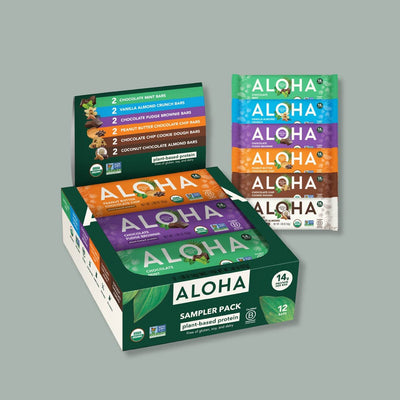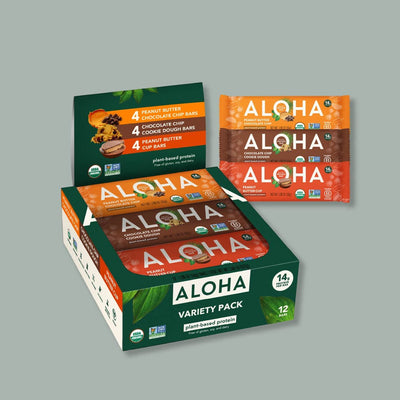Definition: Taro is a starchy root vegetable native to Southeast Asia. It is widely used in global cuisines for its nutty flavor and creamy texture. Due to naturally occurring compounds that can cause irritation, it must be cooked before eating.
Science: Taro contains calcium oxalate, which can be toxic when raw but is neutralized through cooking. It is rich in fiber, potassium, vitamin E, and antioxidants, making it beneficial for heart health and digestion.
Examples of Taro in Food:
- Hawaiian Poi – A traditional dish made from mashed taro root.
- Taro Bubble Tea – A sweet, purple-hued drink made with taro puree.
- Taro Chips & Fries – A crispy snack alternative to potato chips.
- West African Fufu – A starchy side dish served with soups and stews.
Fun Fact: Taro is one of the oldest cultivated crops in the world, dating back over 5,000 years! In Hawaiian culture, it is considered a sacred plant and a symbol of life.
Key Takeaways:
- Taro is a Versatile Root Vegetable: Taro is a staple in many global cuisines, used in sweet and savory dishes. It must always be cooked before eating to remove potentially harmful compounds.
- Packed with Nutritional Benefits: Taro is rich in fiber, vitamins, and minerals, supporting digestion, heart health, and blood sugar control. Its natural nutrients make it a great alternative to refined carbohydrates.
- Different Cultures Use Taro in Unique Ways: From Hawaiian poi to Chinese taro mooncakes and West African fufu, taro plays a major role in various culinary traditions. It can be boiled, mashed, fried, baked, or blended into drinks and desserts.
The Origins And History Of Taro
Taro (Colocasia esculenta) is one of the oldest cultivated crops in the world, dating back thousands of years. It is believed to have originated in Southeast Asia and India, where it was first domesticated as a staple food. From there, taro spread across different regions, becoming a key part of traditional diets in Africa, the Pacific Islands, China, and the Caribbean.
Taro In Ancient Cultures
- Southeast Asia & India: Taro has been cultivated for over 5,000 years in these regions. Due to its resilience and high nutritional value, it was an essential food source for early civilizations.
- Polynesia & Hawaii: Taro played a vital role in Polynesian culture, especially in Hawaii, where it is known as kalo. The plant was deeply respected and used to make poi, a traditional Hawaiian dish made by pounding boiled taro into a smooth, sticky paste.
- Africa & the Caribbean: Taro was introduced to Africa through trade and later brought to the Caribbean by enslaved Africans. It remains a staple in many traditional dishes, such as West African fufu and Caribbean callaloo.
- China & Japan: In East Asia, taro is commonly used in soups, desserts, and stir-fries. It is especially popular in Chinese mooncakes and Japanese taro stews.
A Crop That Stands The Test Of Time
Because of its ability to grow in various climates and its versatility in cooking, taro has remained a crucial food source for many cultures worldwide. Today, it continues to be appreciated not only for its history and cultural significance but also for its nutritional benefits.
What Does Taro Look And Taste Like?
Taro is a unique-looking root vegetable that stands out due to its rough, brown skin and distinctive interior. It is often mistaken for other root vegetables like yams or sweet potatoes, but it has its own distinct characteristics.
Appearance Of Taro
- Outer Skin: Taro has a thick, hairy, and rough brown skin that needs to be peeled before cooking. Some varieties have a more fibrous texture than others.
- Flesh Color: Depending on the variety, the inside of the taro can range from white to pale lavender, sometimes with purple specks.
- Leaves: Taro leaves are large, heart-shaped, and green, resembling elephant ears. They are also edible when properly cooked.
What Does Taro Taste Like?
Taro has a mild, nutty, and slightly sweet flavor. Its taste is often compared to a combination of sweet potatoes and chestnuts. When cooked, its texture becomes creamy, starchy, and smooth—similar to mashed potatoes but with a slightly firmer consistency.
How Taro's Flavor Changes When Cooked
- Raw: Raw taro contains calcium oxalate, which can irritate if eaten uncooked. It must always be cooked before consumption.
- Boiled or Steamed: Taro develops a soft, creamy texture with a subtly sweet and earthy flavor.
- Fried or Roasted: When fried, taro becomes crispy on the outside and tender inside, making it a popular ingredient in chips and fries.
- Blended in Drinks or Desserts: Taro is commonly used in bubble tea and desserts due to its smooth, naturally sweet profile.
Its unique texture and versatility make taro a favorite in many cuisines worldwide.
Is Taro Healthy? Understanding Its Health Benefits
Taro is not just a staple food in many cultures; it also offers numerous health benefits. Rich in fiber, essential vitamins, and minerals, this root vegetable supports overall well-being in multiple ways. Let’s take a closer look at why taro is considered a healthy addition to your diet:
Rich In Nutrients And Fiber
Taro is a powerhouse of essential nutrients, including fiber, vitamin C, vitamin E, and potassium. Its high fiber content promotes healthy digestion by aiding in bowel movements and reducing the risk of constipation. Additionally, taro provides complex carbohydrates that release energy slowly, preventing sudden spikes in blood sugar.
Supports Heart Health
Due to its potassium and fiber content, taro may contribute to a healthier heart. Potassium helps maintain healthy blood pressure by counteracting the effects of sodium, which can reduce the risk of hypertension. The fiber in taro also lowers cholesterol levels, while its antioxidants help protect the heart from oxidative stress.
Aids In Blood Sugar Control
Despite being a starchy vegetable, taro has a low glycemic index, meaning it does not cause sharp blood sugar spikes. The fiber in taro slows down the digestion of carbohydrates, helping to regulate glucose absorption in the body. This makes taro a great option for individuals managing diabetes or looking to stabilize their blood sugar levels.
Boosts Immunity And Skin Health
Taro contains powerful antioxidants like vitamin C and vitamin E, which help strengthen the immune system. These vitamins protect cells from free radical damage, reducing the risk of infections and premature aging. Regular consumption of taro can also contribute to glowing skin by maintaining hydration and elasticity.
How Taro Is Used In Different Cuisines
Taro is a versatile ingredient found in many global cuisines, each using it in unique and delicious ways. From savory dishes to sweet desserts like protein bars, this starchy root has been embraced for its smooth texture and slightly nutty flavor. Let’s explore how different cultures incorporate taro into their traditional meals:
Taro In Asian Cuisine
In China, taro is commonly used in soups, stir-fries, and desserts like taro paste-filled mooncakes. Japan incorporates taro into stews like nimono, which absorbs the flavors of soy sauce, dashi, and miso. In Southeast Asia, it is often used in curries, deep-fried snacks, and sweet coconut milk-based desserts such as Filipino ginataang bilo-bilo and Thai taro custard.
Taro In Hawaiian And Polynesian Cuisine
Taro, known as kalo in Hawaii, is a deeply respected plant in Polynesian culture. It is most famously used to make poi, a traditional dish where cooked taro is mashed into a smooth, slightly fermented paste. Additionally, taro leaves are often used in dishes like lau lau, wrapped around meat or fish and steamed for a tender, flavorful meal.
Taro In African And Caribbean Cuisine
In West Africa, taro is sometimes used instead of yam to make fufu, a starchy side dish served with soups and stews. The Caribbean incorporates taro into dishes like callaloo, a leafy green soup, and dasheen pie, a rich, cheesy baked dish made with mashed taro. Because of its hearty texture, taro is often used in stews and slow-cooked dishes, absorbing flavors beautifully.
Taro In Indian And Middle Eastern Cuisine
In India, taro (called arbi) is used in spicy, flavorful curries and dry stir-fries, often paired with cumin, turmeric, and other aromatic spices. For a crunchy treat, it is also deep-fried to make crispy snacks like arbi chips or coated in chickpea flour batter. In some Middle Eastern countries, taro is simmered in tangy tomato-based sauces or served alongside meats in hearty stews.
Taro In Western Cuisine
While not as common in Western cuisine, taro has gained popularity as an alternative to potatoes. Taro chips and fries are becoming trendy in health-conscious restaurants due to their unique taste and nutritional benefits. Additionally, taro powder is widely used in bubble tea and ice cream, introducing its subtly sweet flavor to Western audiences.
How To Cook And Eat Taro
Taro is a highly versatile ingredient that can be prepared in many ways, from boiling and steaming to frying and baking. However, it is important to note that raw taro contains calcium oxalate, which can cause irritation and should always be cooked before eating. Here’s a breakdown of the best ways to prepare and enjoy taro in your meals:
- Boiling and Steaming Taro: Boiling is one of the simplest ways to cook taro, as it softens the root and brings out its naturally mild, nutty flavor. Simply peel the taro, cut it into chunks, and boil until tender, similar to how you would prepare potatoes. Steamed taro is another healthy option, often used in Asian cuisines as a base for mashed taro dishes or as an ingredient in dim sum.
- Frying Taro for a Crispy Texture: Fried taro is a popular choice for making crispy taro chips or taro fries, offering a crunchy alternative to regular potato chips. The root is thinly sliced, deep-fried, and lightly salted, creating a delicious snack that pairs well with dips and sauces. Some dishes, like Chinese taro dumplings (wu gok), use mashed taro wrapped around fillings and deep-fry them to golden perfection.
- Mashing and Pureeing Taro: Mashed taro is a staple in many cuisines, often served as a creamy side dish or used as a base for other recipes. In Hawaiian culture, taro is pounded into poi, a smooth, slightly fermented paste with a unique taste and texture. Taro puree is also widely used in desserts, such as taro ice cream and pastries, due to its naturally sweet and creamy consistency.
- Baking Taro into Sweet and Savory Dishes: Baked taro is a versatile ingredient in both sweet and savory dishes, making it a great addition to everything from casseroles to desserts. It can be sliced and baked with butter and seasonings for a flavorful roasted dish or blended into cakes, breads, and even protein bars for a unique twist. Some cultures also use taro flour as a gluten-free alternative in baking, adding a subtle nutty flavor to various baked goods.
- Blending Taro in Drinks and Desserts: One of the most well-known uses of taro in modern cuisine is in beverages like taro bubble tea, which features sweet, creamy taro milk blended with tapioca pearls. Taro is also commonly used in Asian desserts, such as taro balls in sweet soups and coconut taro pudding. Its naturally smooth texture makes it an excellent ingredient for dairy-free ice creams, smoothies, and custards.
Read also:
- How To Get Protein Without Meat: Top Plant-Based Sources
- How Much Protein Can You Absorb In One Meal?
- How Long Does Protein Stay In Your System? Key Facts
Frequently Asked Questions About What Is Taro?
Is taro the same as purple yam?
No, taro and purple yam (ube) are different root vegetables, although they are often confused due to their similar appearance. Taro typically has white or pale lavender flesh with specks, while ube is deep purple. They also have distinct flavors—taro is mildly nutty, whereas ube is sweeter with a vanilla-like taste.
Can taro be eaten raw?
No, raw taro contains calcium oxalate crystals, which can irritate the mouth and throat. Cooking neutralizes these compounds, making taro safe and enjoyable to eat. It should always be boiled, steamed, or cooked in some way before consumption.
What are the different types of taro?
Several varieties of taro exist, including small taro used in stews and soups and large taro commonly used for poi and mashed dishes. Some varieties have purple-speckled flesh, while others are entirely white inside. Different regions cultivate specific types depending on their culinary traditions and climate conditions.
Does taro have a natural sweetness?
Yes, taro has a mild natural sweetness but is not as sweet as sweet potatoes or yams. When cooked, its starches break down slightly, giving it a subtly nutty and slightly sweet flavor. This makes it perfect for both savory dishes and desserts.
Can taro be grown at home?
Yes, taro can be grown at home, especially in warm, humid climates. It requires well-drained, moist soil and thrives in areas with plenty of rainfall or consistent watering. However, it takes several months to mature, so patience is needed before harvesting.
Is taro safe for pets to eat?
No, if consumed raw, taro is toxic to dogs and cats due to its high calcium oxalate content. It can cause irritation, difficulty breathing, and digestive issues in pets. If you suspect your pet has eaten raw taro, contact a veterinarian immediately.
How does taro compare to potatoes in terms of nutrition?
Taro is higher in fiber than potatoes, which is beneficial for digestion and gut health. It also contains more antioxidants, vitamin E, and magnesium, which support heart health. However, potatoes have a higher vitamin C content, so each root vegetable has unique benefits.
Can taro be used in gluten-free diets?
Yes, taro is naturally gluten-free and can be used as a substitute for wheat-based ingredients. Taro flour is sometimes used in baking and as a thickening agent in soups and sauces. Many gluten-free diets incorporate taro due to its starchy, satisfying texture.
What gives taro its purple color?
Not all taro is purple, but some varieties contain anthocyanins, natural pigments that give them a light purple hue. These compounds provide antioxidant benefits and are also found in blueberries and red cabbage. The color can deepen depending on how the taro is cooked and processed.
How can I tell if taro has gone bad?
Fresh taro should be firm and free of mold or soft spots. It is no longer safe to eat if it starts to feel mushy, develop an unpleasant odor, or grow mold. Proper storage in a cool, dry place can help extend its shelf life.
Sources:
1. Ferdaus, M. J., Chukwu-Munsen, E., Foguel, A., & da Silva, R. C. (2023). Taro Roots: An Underexploited Root Crop. Nutrients, 15(15), 3337. https://doi.org/10.3390/nu15153337
2. Aditika, Kapoor, B., Singh, S., & Kumar, P. (2021). Taro (Colocasia esculenta); Zero wastage orphan food crop for food and nutritional security. South African Journal of Botany. https://doi.org/10.1016/j.sajb.2021.08.014
3. Ribeiro Pereira, P., Bertozzi de Aquino Mattos, É., Nitzsche Teixeira Fernandes Corrêa, A. C., Afonso Vericimo, M., & Margaret Flosi Paschoalin, V. (2020). Anticancer and Immunomodulatory Benefits of Taro (Colocasia esculenta) Corms, an Underexploited Tuber Crop. International Journal of Molecular Sciences, 22(1), 265. https://doi.org/10.3390/ijms22010265
4. Chandrasekara, A., & Josheph Kumar, T. (2016). Roots and Tuber Crops as Functional Foods: A Review on Phytochemical Constituents and Their Potential Health Benefits. International Journal of Food Science, 2016, 1–15. https://doi.org/10.1155/2016/3631647
5. Mariutti, L. R. B., Rebelo, K. S., Bisconsin-Junior, A., de Morais, J. S., Magnani, M., Maldonade, I. R., Madeira, N. R., Tiengo, A., Maróstica, M. R., & Cazarin, C. B. B. (2021). The use of alternative food sources to improve health and guarantee access and food intake. Food Research International, 149, 110709. https://doi.org/10.1016/j.foodres.2021.110709
ALOHA's products are not intended to treat, diagnose, mitigate, prevent, or cure disease. ALOHA's products should not replace prescribed medications or the variety of foods important to a healthful diet.
Do not self-diagnose any health condition. Work with your healthcare provider to determine how best to achieve optimal health.












